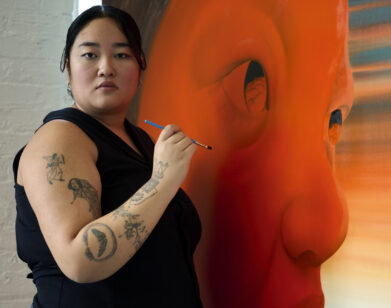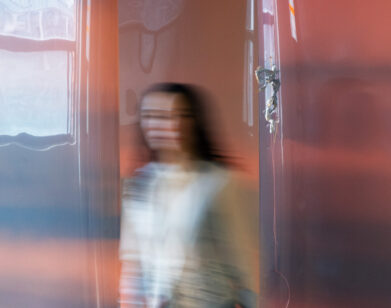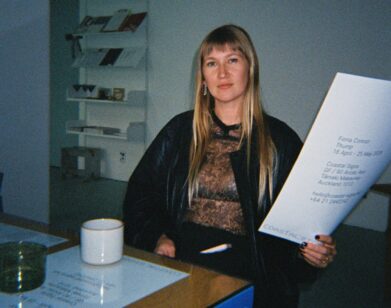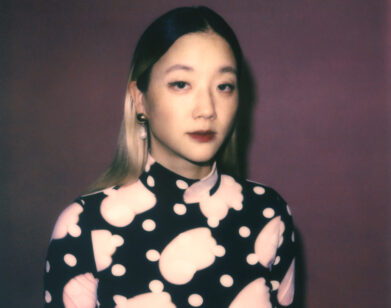start spreading the news
Painter Harold Ancart’s Two Favorite Cities: New York and New York
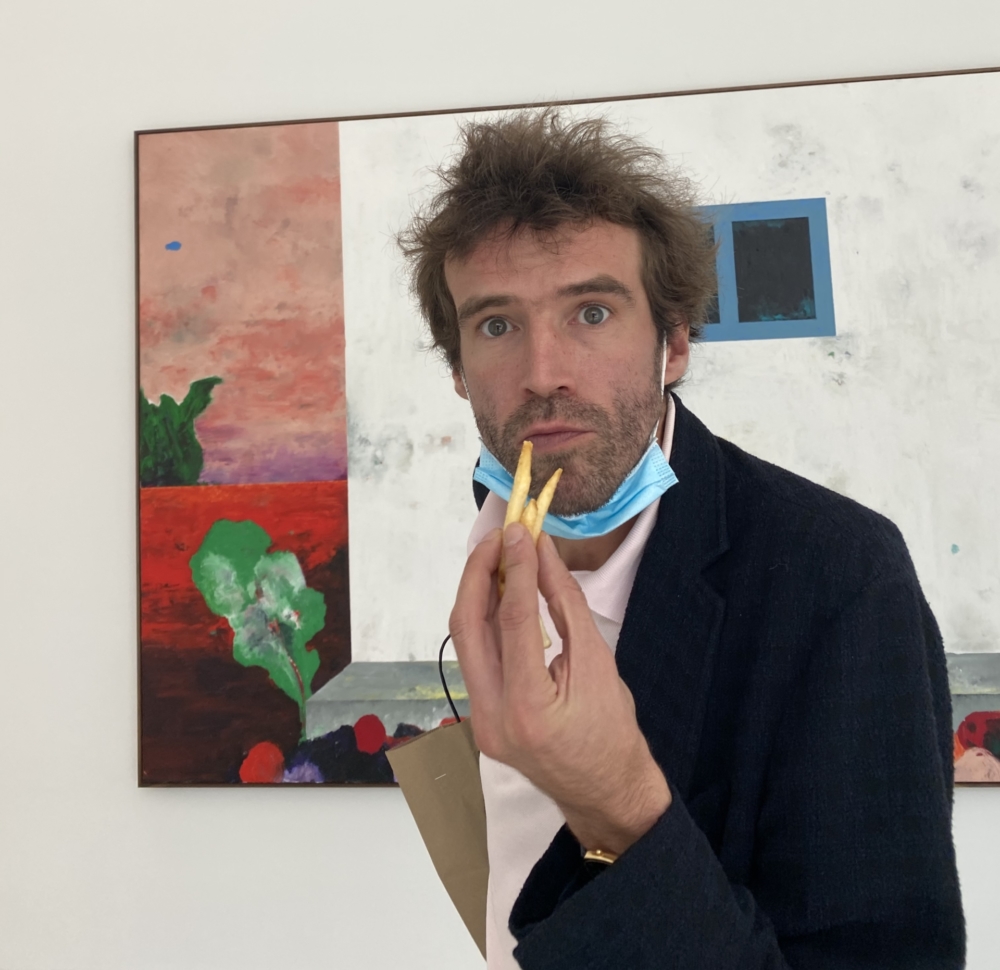 Harold Ancart is a Belgian painter based in New York City. He turned 40 at the peak of the pandemic in Los Angeles, California, where he painted trees and landscapes in a garden studio. Most of Harold’s work is about movement. He explained this aspect of his work recently through the consideration of the flâneur, which he defines as “one who walks around and tries to isolate poetic moments out of the everyday urban landscape. I think that’s how I’ve learned to be an artist—by walking the streets and not torturing myself in a studio.” His work is now part of the collections of the Whitney Museum, Guggenheim, LACMA, The Centre Pompidou, and Fondation Beyeler, among others. His most recent solo show, Traveling Light, was on view at David Zwirner’s 19th Street location in New York City.
Harold Ancart is a Belgian painter based in New York City. He turned 40 at the peak of the pandemic in Los Angeles, California, where he painted trees and landscapes in a garden studio. Most of Harold’s work is about movement. He explained this aspect of his work recently through the consideration of the flâneur, which he defines as “one who walks around and tries to isolate poetic moments out of the everyday urban landscape. I think that’s how I’ve learned to be an artist—by walking the streets and not torturing myself in a studio.” His work is now part of the collections of the Whitney Museum, Guggenheim, LACMA, The Centre Pompidou, and Fondation Beyeler, among others. His most recent solo show, Traveling Light, was on view at David Zwirner’s 19th Street location in New York City.
———
EMILIEN CRESPO: How did you get to painting, or how did painting get to you?
HAROLD ANCART: I’ve always drawn and I’ve always made watercolors. It’s something I started doing as a kid in elementary school and I kept on doing it in primary school, where you’re actually not supposed to do that. You’re supposed to focus on mathematics and other work. But to me, painting and drawing were always a means of transportation. It would allow me to escape the boredom of being at school, and having to listen to and do things that I was not necessarily interested in. When I start drawing or painting, time vanishes, which means that my school days would shrink, thanks to that! [Laughs] And then whatever happens in my head, in terms of wonder, is something that, to me, is very unique, and I don’t find anything that’s equal to it. It’s almost like meditation. I’ve always noticed that my mind can wander extremely freely, and that great ideas about the world that surround me come to me while I am drawing and painting.
CRESPO: Tell us about your beginnings, when you moved to New York after studying in Belgium.
ANCART: Well, the first thing is that I never really wanted to become a painter, or an artist, because I was terrified of striving, and struggling, and poverty. And I really didn’t like the almost bohemian vibe that surrounded the person of the artist in general. So, becoming an artist was never the number one thing I saw myself doing. I rather saw myself as a diplomat or someone that travels the world, and somehow shares ideas and brings, I don’t know, identity and democracy. Of course, I never became a diplomat.
I tried political science. It was, obviously, not for me. I think after a few weeks at university I dropped out, and then did nothing for a while, which was terrifying. I was drinking beers, smoking weed, playing pool, or billiards with friends who were not very interested in studying either. That was not a very fulfilling time of my life. And then I started thinking that there were not so many things I was naturally gifted at, but painting was one of them, so I went to art school. It was the first time that I shared ideas and people told me that my ideas were actually interesting. That they liked my point of view on the activity and that they would be happy and willing to start working with me, which we did. And it’s been, more or less, successful. Once I graduated, I was in Belgium, it was 2007. Nothing was going on there, or not much. There was a very small artist community that seemed, to me, very difficult to integrate. And there were a few art centers, but let’s just say it was not an El Dorado. I started looking at the map, and then I asked myself, where are the painters? The answer ended up being New York. It wasn’t easy being completely broke.
CRESPO: What kept you going?
ANCART: Pride. I didn’t want to go back to my momma. I wanted to succeed. When I left to New York, a lot of people were making fun of me, saying, “Yeah. You’ll come back la queue entre les jambes.” Which means the tail in between the legs, like a beaten dog that’s just lost the fight against the biggest dog in the neighborhood. There was one thing about New York that was very different from Brussels, and that was that the people wouldn’t judge you based on the fact that you were poor. It didn’t really matter to them. They would judge you on the fact that you have interesting things to say, and I appreciated that. I didn’t mind being poor in New York because I never felt like a lesser self. I was never embarrassed by it. Whereas, I knew that if I had to go back to Brussels, I would probably enroll in unemployment, get some money from the government because I had a university degree so I was entitled to get that, and maybe do jobs on the side and eventually get lazy and more comfortable because at least I would have had a bed and a bathroom. But I didn’t want that. I wanted to be in New York. I wanted to succeed in New York. And I really never felt unhappy or sad being there. If I recall, sometimes I felt blue in the morning because I was sick of eating half a bagel for breakfast, and the other half for lunch. And then I would try to go to some opening to find something cheap to nibble on. Sometimes I would stop and look at people at the restaurant windows, like Oliver Twist or something. And I would think, oh, I would like to have quail, or a beautiful steak on a nice plate, on a white table cloth, in a steak house, with mashed potatoes. But what doesn’t kill you makes you stronger. And even if I had it hard, there was always joy.
CRESPO: When was the time you felt you’d become a painter?
ANCART: I think what defines you as an individual is pretty much what society says you are. It’s like a mirror. It’s easy to say that you’re an artist. If you say, “I’m an artist,” anybody can say yes or no. It’s questionable. Once the New York Times says, “This is Harold Ancart. He’s an artist. He makes paintings,” I think it’s very complicated to say you are not an artist. Also, I received a lifetime artist membership at the Whitney because I’m in the Whitney collection. The Whitney is the Museum of American Art, and I am not American, and will never be because I’m European. But I think my practice is very rooted in an American way of making art. I was deeply honored that they would put my work in their collection, and deeply honored to receive a lifetime membership. This is the first thing I asked for, way back when. I said, “When do I get the lifetime pass, guys?” And then, once I got the membership, it came to my mind, what if one day I don’t want to be an artist any longer? So, I wrote to the Whitney curator David Breslin asking him, “Hey, it says lifetime, but what if I quit?” And he said, “No, it’s impossible for you. Now that you are in our collection, you will be an artist forever.” And so I thought, “Okay. I guess that’s my destiny.”
CRESPO: What scares you?
ANCART: There’s a lot of things that scare me, like snakes, piranhas, and sharks. I think violence scares me. Physical violence, not verbal. Although it depends, because there are many ways of being violent. What scares me now is that maybe someday I will lose this ability that I have of making paintings, and being appreciated by people at large for my work. Not only the professionals, but also the kids. I notice that kids like my paintings. What scares me is losing my gift. I think everyone is gifted at something, or everyone has potential or capacities for certain things. It is one thing to be gifted, but then if you really want to make the best out of the little gift you have, you have to work. Work is essential. You have to be consistent. You have to do it even though sometimes you don’t want to because that’s what makes a practice evolve. Never resting, always working.
CRESPO: What are you excited to explore in the future?
ANCART: Well, there’s this one thing that some people say, “Whoever is obsessed with what’s going to happen in the future is a coward.” The reason this could be perceived as cowardice is because you don’t want to think about the future. You want to be in the present. It’s the only thing that exists. Second after second. And if you plant the right seeds, you don’t have to worry about the future. You only have to worry about the future if you’re a con-artist, or if you’re a Mickey Mouse, or a fake diamond. I think if you have integrity and if you don’t try to be what you are not, and if you’re in touch with your reality, everything’s going to be fine. There’s that thing about the future, and it’s very interesting when it comes to painting, because painting is often based on projection. You have an idea, so you make a projection. But I think that most activities are based on that. You make projections and then all of a sudden you see yourself where you are not yet, and that gives you direction. And I think it’s also where the great disaster of humanity lays: in making projections. Being here, wanting to be somewhere else, but never really being able to be anywhere else but where you’re standing. Like a rooster who wants to fly away, but can only step on his own shit and scream and wake people up in the morning. If you’re happy with being a rooster, then you’ll have a happy life as a rooster.
I always have an idea of what I’m going to make, or what I want to make. But I try to keep this idea as vague as possible so that I can focus on what I am doing while I am doing it. This allows things to end up being what they are and not what I want them to be. And I believe that most of the time, there’s nothing wrong with things being the way they are. I think when things are the way they are, somehow, they are right. Projecting myself in the future maybe goes as far as, “What are we going to do for lunch?” when it’s the morning. And then, maybe, what am I going to do with my afternoon? Maybe I’m going to go to the bookstore because I’m not painting today, and I will know which book I’m going to buy, but I won’t know who I’m going to run into, and so on, and so on, which is the magic of life. It’s full of surprises.
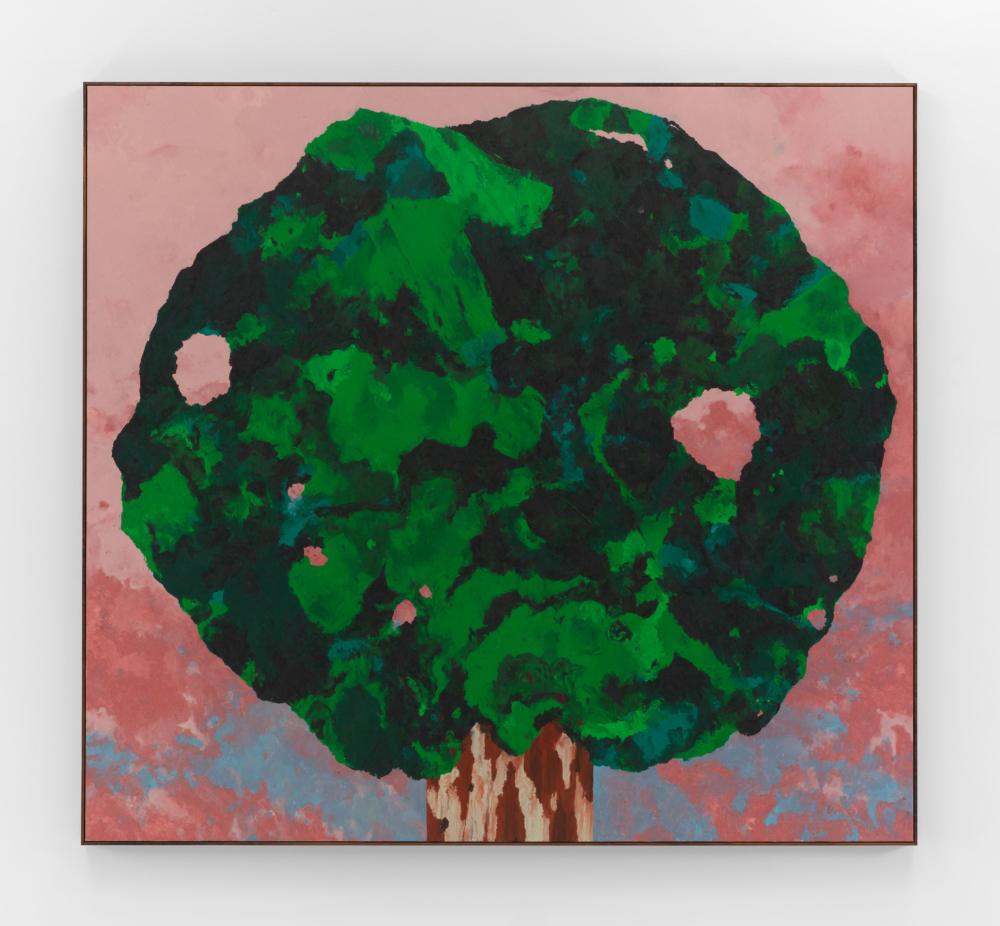
CRESPO: Where does your fascination for travel come from?
ANCART: Well, I have been traveling since I was a little boy. My mother used to be a flight attendant, and whenever I would have a school holiday, a long weekend, or any sort of vacation, she would take me with her. We traveled around the world: Africa, America, Southeast Asia, etc. This aspect of my early life really stayed with me. Hopping on a plane, going someplace for three days and coming back. When the airline went bankrupt I was not traveling at all for a while. I couldn’t afford plane tickets any longer. Now that I have the means to travel again, I do it all the time.
CRESPO: What did travel teach you?
ANCART: Traveling opens your views and perspectives of the world more than anything else. I think one of the most shocking experiences for me was when my mom first took me to Mumbai. I was nine. I had seen a lot of poverty before, but never like that. I remember waking up very, very early in the morning, because we were jet lagged, and we were walking the streets because my mom knew this café that would open early in the morning. A man was walking along the sidewalk, and everybody was sleeping on the sidewalk next to each other. The man was hitting the feet of the sleeping people, and whoever didn’t move would be taken and dumped into a carriage that was pulled by a very skinny horse, or donkey, or mule. It was literally garbage for the dead humans. I remember having a panic attack. And I remember seeing other horrible things, like kids whose parents had cut off one of their limbs when they were born, so that they would make better beggars. Travel forges your character, and it completely alters the vision that you have of the world. I’m extremely lucky to have a mother who was a flight attendant because she offered me the world on a plate. Few kids have traveled as I traveled as a child. It definitely had an impact on the way I grew up, and it still does have an impact on the way I consider the world around me. It is not necessarily a happy place. It’s a difficult place, and it’s a violent place. But what has always fascinated me is that, nevertheless, no matter how difficult people’s conditions may be, there is always joy. That is something that really strikes me.
CRESPO: What is the restaurant that changed your view on food?
ANCART: I would say that one of the most incredible experiences I had was to get to go to Gaggan in Thailand. Gaggan is this Indian chef who studied molecular cuisine at El Bulli. This cuisine is very much inspired by street food that you can eat in India, yet it states very clearly that there is no such thing as Indian food because India is a giant country that has many regions, and everywhere the food is prepared differently with different spices, and so on. I think Gaggan has a very interesting way of paying tribute to all the cultural heritage that is his, knowing also that his restaurant is in Bangkok, one of the world capitals of street food. It’s the first time I experienced that type of combination. Another thing I think that is interesting there is that the menu is made of emojis, which I’m not necessarily a fan of, but it really makes sense, because it is a visual indication of what you smell and what you see on your plate. There’s never silverware. You eat everything with your hands. Sometimes you even have to lick the plate. There’s this famous dish that comes with a speaker blasting AC/DC’s “Lick It Up,” which is completely insane. It’s a Michelin Star restaurant. It is in a very beautiful house. There are white tablecloths. I like tablecloths because the light reflects nicely on people, and they look good at the table. I think it’s important to look good at the table because it’s a very intimate thing, eating in front of each other.
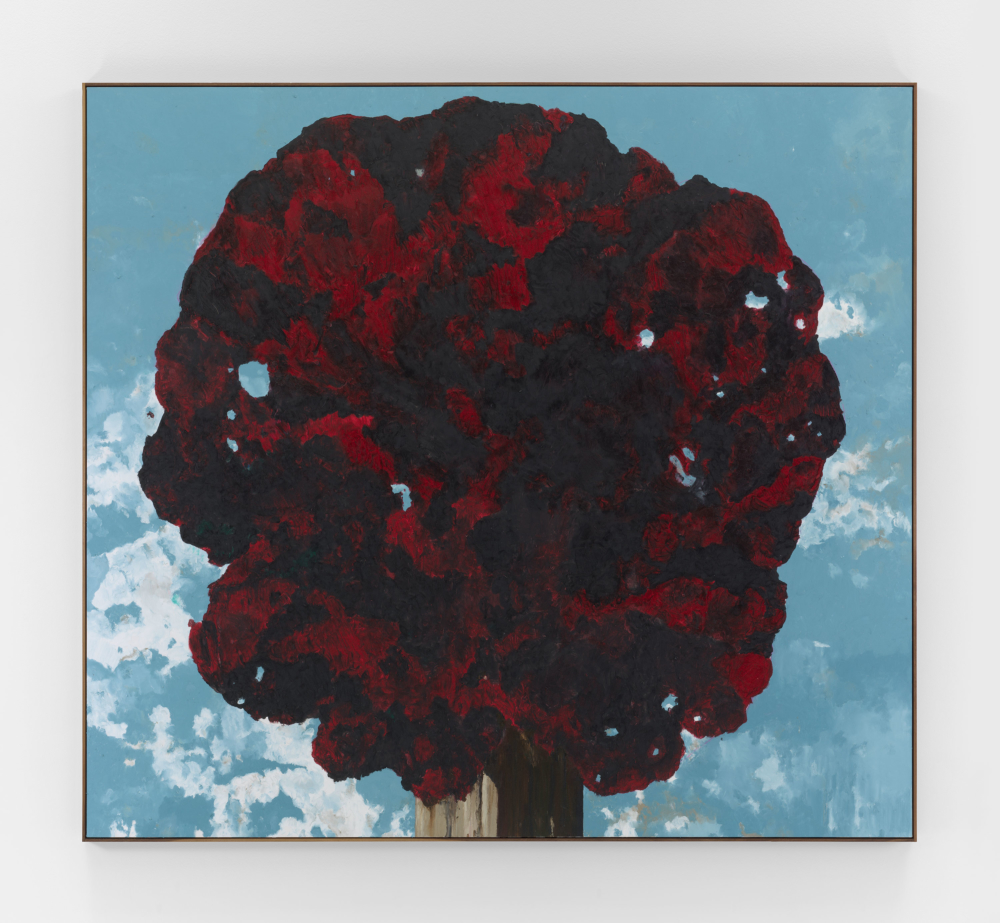
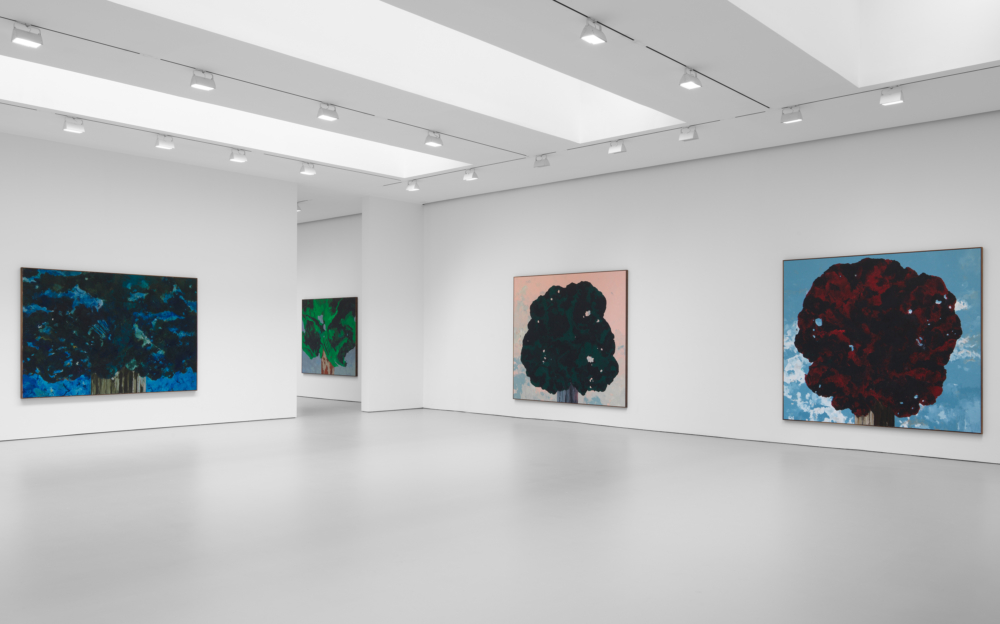
CRESPO: Why are you always in movement? Are you trying to escape something?
ANCART: Movement is perpetual. If you’re not in movement, it means you’re dead. I don’t think it is about running away from everything. One thing that is for sure is that if you take your car and you leave on a road trip, all your problems are going to remain behind for a while. And eventually, at some point, they will catch up to you. But that’s the beauty of traveling. Traveling also allows you to leave a lot of heavy stuff that may be worrying you in your everyday life behind. That’s why people go on vacation, or on holiday, because it’s a new environment, and new scenery and discovery. It allows you to overcome the boredom and monotony of the everyday for a little while.
CRESPO: If you had to choose two cars to escape with…
ANCART: F355 Berlinetta, preferably with a manual transmission, and probably in a dark blue color. That, I find incredible. And then a 911 SC from the ’80s. Very mechanical, very good cars, very fun to drive.
CRESPO: Two paintings not by you?
ANCART: There is a great painting by Philip Guston, Stationary Figure, at the Met right now that is unbelievable. And then, Ocean Park (Number 30) painted by Richard Diebenkorn. That I also saw at the Met recently.
CRESPO: Two living painters?
ANCART: Calvin Marcus and Avery Singer.
CRESPO: Two hotels?
ANCART: Park Hyatt in Tokyo and Villa d’Este in Lake Como.
CRESPO: Two things to wear?
ANCART: A nice suit from Huntsman and a Seiko watch from the ‘50s.
CRESPO: Two restaurants?
ANCART: L’Ambroisie in Paris and Altro Paradiso in New York.
CRESPO: Two things to put in your glass?
ANCART: Whiskey Hibiki 35 or this extraordinary wine, Chassagne-Montrachet 1er Cru called La Dent de Chien made by Jean-Pierre Cournut who owns Château de la Maltroye.
CRESPO: Two books?
ANCART: Death in the Afternoon by Ernest Hemingway and Requin by Betrand Belin.
CRESPO: Two singers?
ANCART: Frank Ocean and Frank Sinatra.
CRESPO: Two dishes you cook?
ANCART: I can make a lasagna. I always say that. That being said, I’ve never made a lasagna for anybody. And maybe veal chop, like a double-cooked veal chop, first in the cast iron, then finished in the oven. That’s delicious.
CRESPO: Two cities?
ANCART: New York and New York.



